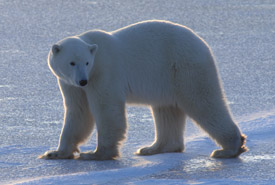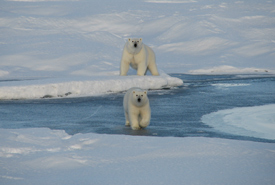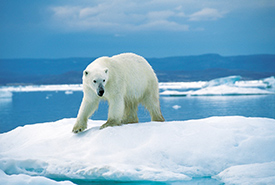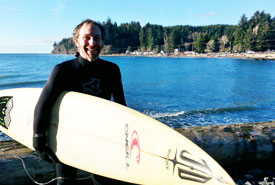Love for the unseen

Polar bear (Photo by Andrew Derocher)
Never in my life have I had the pleasure of seeing a polar bear. Nor have my experiences ever brought me into a position of sharing space with this hyper-carnivorous predator who has dominated the food chain in its habitat so fully that it has become synonymous with its native landscape, the Arctic. Yet, somehow, the polar bear has always been a part of my living landscape — the intersection between geography and culture. It has been there, lurking on the outside of my perception of the world, like a phantom, since I was a child.
My first stuffed animal was a polar bear named Dodie. How Dodie came to me is something of a mystery. It’s perhaps more fulfilling to simply accept that Dodie had been my protector, defender and guide since birth. Dodie followed me from house to house, from city to city as we moved across Canada’s eastern shield, loyally accepting that the climate selected by my parents would be home (regardless of the humidity and long summers). Never once did Dodie complain to me about the weather, though in his eyes I caught a glimpse here and there of how it longed for winter.

Polar bear mother and cub (Photo by NCC)
For many years, Dodie lay forgotten in my mother’s closet while I went off and experienced the world. The seed of our relationship, however, was deeply planted; Dodie’s stewardship made me an environmentalist and, in great part, led to me working at the Nature Conservancy of Canada (NCC).
Dodie's loving demeanour endeared “the North” to me to a point where it never suffered the fate of becoming an antipodal “dark continent” in my landscape. Never was the North a hidden, forgotten or barren place. Rather, the lands where polar bears live have always been a populated place, filled with their own challenges, peoples, traditions and species that each seek a life in the same way that we, their southern cousins, do on a daily basis.
This year, when my mother came to live with my partner and me, Dodie came with her. It’s odd, holding a stuffed animal in your hands after so long, the memories foggy and their meaning very much altered by the passage of time. Yet the symbolism was not lost on me. Despite never having travelled farther north than the 54th parallel, the desire to do so is there.

Polar bear (Photo by Ansgar Walk)
Human-caused climate change is impacting my relationship to travel these days, and it’s hard for me to reconcile these feelings. That Dodie came now, this year, when polar bear habitat is experiencing more drastic changes than many humans can comprehend, and when the temperatures in the North are being spoken about more and more, is not lost on me.
The North, if it’s to survive in any recognizable form, may be filled with places that I will not see in my lifetime. But that doesn’t mean there isn’t a little polar bear in my heart, and that a little wisdom in what Dodie tried to impart finally rubbed off on this human.


